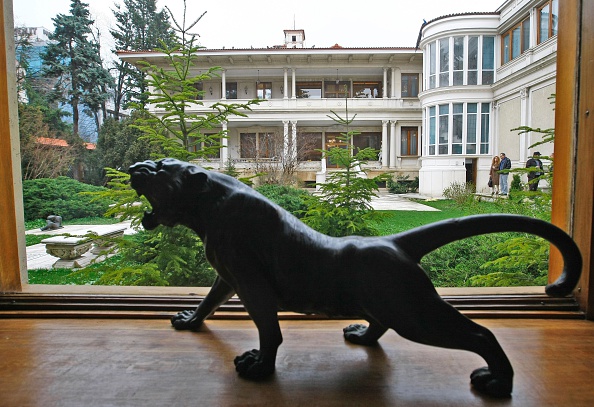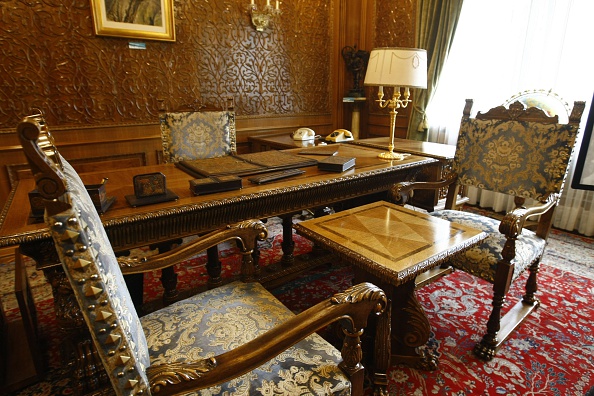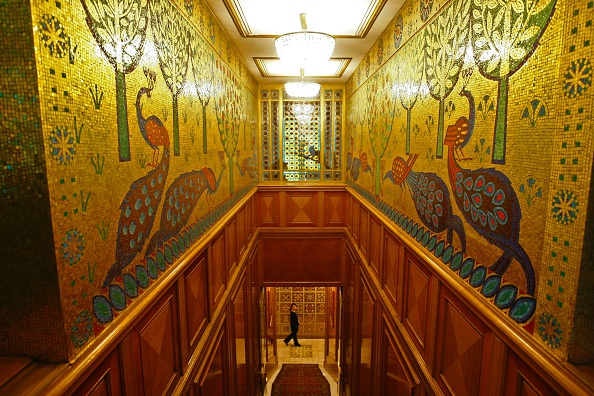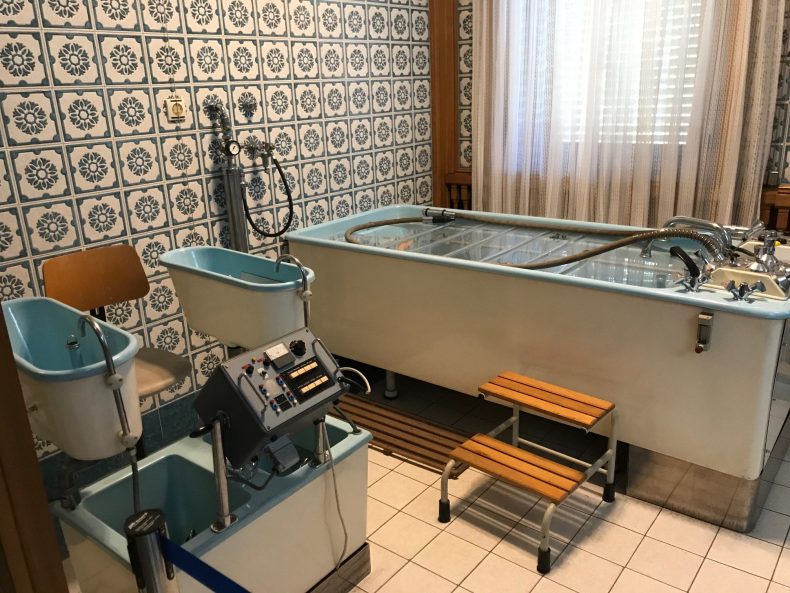Spring arrived late in Bucharest in 1968 – on 21 August to be precise. That was the day when the communist leader Nicolae Ceaușescu mounted a balcony in Palace Square and denounced before the gathered faithful the Soviet invasion of Czechoslovakia the previous night. In contrast to Prague, where spring disappeared beneath the exhaust clouds of Russian tanks, the season of rebirth lasted a whole decade in Bucharest. Ceaușescu’s attack on the USSR made him the darling of the West, feted by Richard Nixon and knighted by Queen Elizabeth II. His stance also earned him big bucks. The IMF waved through multibillion-dollar loans, while Renault lent its technical expertise to facilitate the production of a new car, named the Dacia after an ancient Roman province centred on Romania.
Early in the 1970s, after visiting Nixon in the White House, Ceaușescu decided to upgrade his title of general secretary, which he had inherited from his old cellmate and mentor Gheorghe Gheorghiu-Dej, to that of president. He also took up residence in a spacious new villa in a leafy northern suburb of Bucharest. Branded the Palatul Primăverii, or Spring Palace, this two-storey building captured the mood of confidence nourished by the sunlamp of international favour. Was it also a dig at Russia, whose most famous palace was, of course, named after winter?

The Spring Palace, private residence of the Romanian dictator Nicolae Ceaușescu (1918–89). Photo: David Muntean/AFP/Getty Images, 2016
The Prague Spring took root among students and writers. Spring in Romania, by contrast, was given life by Ceaușescu, the self-styled conducător, himself. Nothing embodied the spirit of the times better than the Palatul Primăverii. As the dollars rolled in, Ceaușescu was suddenly able to live in the fashion of his new friends in Washington and London. Amid Murano chandeliers, handmade walnut carvings, damask wall coverings and doors finished in buffalo leather, Nicolae and his wife, Elena, could share their favourite meal of chopped tomatoes, relax in front of the country’s first colour television (though all Romanian broadcasting was in black and white), or serve distinguished guests tea – always, after the Ceaușescus had shared a pot of Assam with the Queen at Buckingham Palace, drunk with milk, even though it made Elena retch. The Romanian people, unruffled by the winds of change blowing through the nomenklatura, carried on in their same downtrodden state, queuing for food and making the most of the few hours of electricity they were allotted each day.

The office of Nicolae Ceaușescu at his former residence in Bucharest. Photo: David Muntean/AFP/Getty Images, 2016
Kitsch is nowadays the aesthetic mode most commonly associated with late-period Soviet-style communism – slogan-embroidered doilies, plaster figurines of Party leaders, murals of beaming workers. But looking round the Palatul Primăverii, one is struck by both the quality of the objets and the intricacy of the craftsmanship. The obligatory social realist canvases of peasants and labourers, factories and fields become almost invisible beside the fine furnishings the Ceaușescus amassed. Even works by renowned Romanian artists, such as the painter Camil Ressu or the one-armed sculptor Ion Jalea, pale beside showpieces from France, Italy or China.
No one ordinarily would think the Ceaușescus exemplars of good taste. Yet the conducător’s policies, whether by design or default, transformed him into one of the great collectors of his age. The governments of East and West, vying for his favour, showered him with gifts, turning his home into a museum of princely luxuries. Louvre tapestries and Meissen porcelain sat cheek by jowl with Ming vases and Persian carpets, a set of which was presented to Ceaușescu by Mohammad Reza Shah. Kim Il-sung sent Korean antiques, while President Mobutu of Zaire chipped in with an assortment of ivory miniatures.
The décor at the Palatul Primăverii attained a similar standard. Regular invitations to London, Washington and Paris provided Ceaușescu with opportunities to see how the other half lived and to tailor his surroundings accordingly. For his daughter’s suite, he took as his template Marie Antoinette’s apartment at Versailles, commissioning Louis XVI-style tables, chairs and cabinets to furnish it. The rooms set aside for Nicu, his younger son and heir designate, were fitted out in the English style, with unfussy, classical fittings. All of this was helped by the communist government’s long-standing failure to invest in industry. This enabled the Ceaușescus to enjoy the fruits of the many time-honoured handcrafts that survived in Romania when they had vanished elsewhere. The wood-coffered wine cellar, decorated in ‘medieval’ Wallachian style, served as a showroom for Romanian carpentry, while the Byzantine-style fountains dotted through the house drew on the artistic traditions of the Orthodox Church, which otherwise was battered by the communist regime into submission.

Inside Ceauseșcu’s private residence. Photo: David Muntean/AFP/Getty Images, 2016
Yet for all the finery, the Palatul Primăverii still betrays the neuroses of dictatorship. A passageway from Nicolae and Elena’s apartment takes you into a tiled area and the first couple’s infamous gold-domed bathroom, with its mosaic-lined shower and flying mirrors. This may have been sufficient to satisfy a sultan, but for the Ceaușescus it was just the start. Follow the tiled corridor a little further and you reach the heart of the wet wing: a full-blown sanatorium with machines offering every form of hydrotherapy, electrotherapy and hypoxi known to man. A little bit of anxiety about their health is perhaps understandable: Nicolae, after all, was diabetic. But it’s when you get to the kitchen, the customary highlight of any house tour, that the true extent of their paranoia becomes plain. Or, more to the point, when you don’t, for there is no kitchen. The Ceaușescus lived in such terror of poisoning that all their meals were prepared at a secret police facility and dispatched to the house by courier.

Photo: David Gelber
And what about the neighbours? Well, on the left is the bastion-like residence of the Syrian ambassador. He could tell you a thing or two about political springs. But has he yet found a way to inform his boss in Damascus about how it all ended for the Ceaușescus, on Christmas Day in 1989?
Unlimited access from just $16 every 3 months
Subscribe to get unlimited and exclusive access to the top art stories, interviews and exhibition reviews.













![Masterpiece [Re]discovery 2022. Photo: Ben Fisher Photography, courtesy of Masterpiece London](http://zephr.apollo-magazine.com/wp-content/uploads/2022/07/MPL2022_4263.jpg)
The threat to Sudan’s cultural heritage